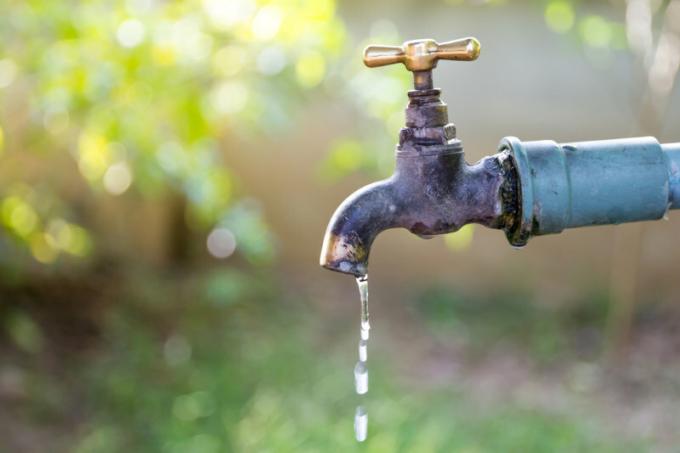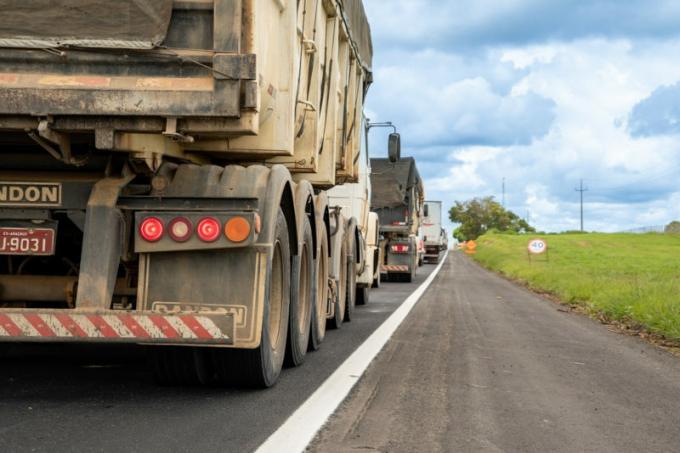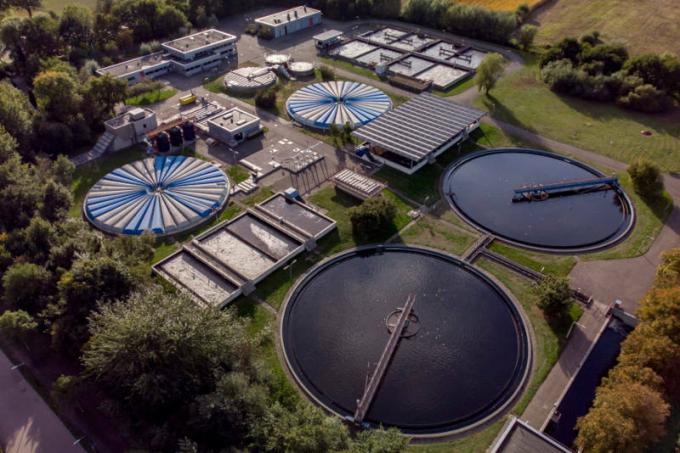Infrastructure is the set of technical elements implemented in a given location to offer and carry out essential services for the population and for economic agents. These services include transport, communication, electricity generation and distribution and basic sanitation. Because of this, infrastructure is essential for maintaining a good quality of life for the population and, also, for the economic development of the territory, ensuring the functioning of production chains and helping to attract new investments.
Read too:Do you know what commuting migration is?
Infrastructure summary
Infrastructure is the set of technical elements installed in a territory to offer and provide basic services for the population and economic agents.
It includes transport, communication, electricity and basic sanitation services.
It is classified into social and economic, depending on its purpose and use.
In Brazil, it is based on road transport and the generation of electrical energy through hydroelectric plants. Bottlenecks regarding the population's access to these services and basic sanitation, especially sewage treatment, are found in the country.
In the world, the countries with dense infrastructure networks are those with a high level of development, particularly Singapore, Switzerland and Canada.
Infrastructure is important for ensuring quality of life for the population and for the full economic development of a territory.
Improvements can be implemented through case studies, expansion of supply networks and regular maintenance of the existing apparatus.
What is infrastructure?
Infrastructure is the entire physical apparatus installed in a given location for the provision of fundamental services for the population's daily lives and for the development of economic activities. When we talk about infrastructure, we are also referring to all services linked to this set of technical elements and which are carried out through them or with their support.
What services are part of the infrastructure?
The infrastructure installed in a space guarantees the implementation of important basic services for the population who lives in that location and for the economic agents who carry out their activities there. The main services that are part of the infrastructure are:
transport (or logistics);
communications;
basic sanitation;
electrical energy distribution.
See too: After all, what is drinking water?
What are the types of infrastructure?
The infrastructure is classified according to the purpose of use and the segment of society or target audience to which it is intended. two categories, which we will discover below.
-
Social infrastructure: set of technical equipment that serves to provide basic services for the population in their homes and residential buildings. Includes basic sanitation, which includes:
garbage collection and sewage treatment;
urban transport;
electricity supply;
communications;
housing.

-
Economic infrastructure: set of technical equipment that provides essential services for economic agents (industries, rural producers, companies, plants), being, therefore, indispensable for the economic development of a territory. Comprises:
transport networks;
terminals;
telecommunications;
electricity supply networks.

Infrastructure in Brazil
Brazil is a country of continental dimensions that faces many problems related to your infrastructure, especially when it comes of transport networks for passenger and freight movements. Given its extension, the railway mode would best meet the demands for medium and long-distance transport in the country.
However, the Brazilian railway network has only 31 thousand kilometers of railway lines, half of which is only of the road network Brazilian federal government, which reached 75.8 thousand kilometers in 2023. Added to this amount are state highways, which are the responsibility of the federation units.
Also note the low use of water transport in the country, although there are many rivers suitable for navigation. The waterways in use, mainly in the Southeast and North regions, transport cargo, such as agricultural and mineral commodities. Passenger transport by waterway is less used, being more common in areas difficult to access by land.

It can be said, therefore, that, in addition to the problems linked to the quality and extension of the Brazilian transport network, the country still fails to use intermodal transport, one in which more than one type of mode is used when moving between one location and another.
Another important aspect of a country's infrastructure concerns the generation and distribution of electricity. The Brazilian electrical matrix is dominated by hydroelectric plants, which represent 61.9% of electrical energy generation in the national territory. Despite the wide coverage of distribution networks in Brazil, there is still a portion of 0.3% of the population without access to electricity.
Still in urban or social infrastructure services, the Instituto Trata Brasil gathered data showing that around 100 million people in Brazil do not have access to sewage collection services, which represents 44.2% of the country's population. Treated water, however, reaches a greater number of people, corresponding to 84.2% of the population.
Infrastructure in the world
In the world the countries that have the best development index, the developed countries, have a broader technical service apparatus to serve economic agents and their population. On the contrary, in underdeveloped countries, observeif a deficient infrastructure network, full of bottlenecks in basic sectors, such as basic sanitation and transport, which end up overloading existing roads and services. This causes economic, political and health problems.
Next, check out what the 20 countries or territories with the best infrastructure in the world, according to 2023 data from the World Bank.
Country or territory |
Location |
Economic classification |
Singapore |
Asia |
Developed |
Switzerland |
Europe |
Developed |
Canada |
North America |
Developed |
Germany |
Europe |
Developed |
Finland |
Europe |
Developed |
Japan |
Asia |
Developed |
Netherlands |
Europe |
Developed |
Sweden |
Europe |
Developed |
Australia |
Oceania |
Developed |
Belgium |
Europe |
Developed |
Denmark |
Europe |
Developed |
South Korea |
Asia |
Emerging (under development) |
United Arab Emirates |
Middle East (Asia) |
Emerging (under development) |
China |
Asia |
Emerging (under development) |
Hong Kong |
Asia |
Developed |
Austria |
Europe |
Developed |
Norway |
Europe |
Developed |
U.S |
North America |
Developed |
France |
Europe |
Developed |
Italy |
Europe |
Developed |
How important is infrastructure?
The infrastructure is important for the social and economic development of a given territory. It is through it that the economic activities of all productive sectors take place. It is also through the use of physical transport and communications networks that goods, services and information reach final consumers: the population.
Still in economic terms, the presence of a complex and diverse infrastructure network increases the chances of a city, state or country receiving national and international investments.
Social infrastructure, in turn, guarantees quality of life for the population, both those who live in the countryside and those who live in the city. Given this, infrastructure becomes not only important but also indispensable for the well-being and leading a dignified life for the population.
Know more: How does water treatment work?
How to improve infrastructure?
Infrastructure is very important for the socioeconomic development of an area, which is why it imposes a series of challenges on managers around the world. The main infrastructure challenges are related to expansion of the physical network and service offering, ensuring greater access to it. Another point that must also be taken into account is the need for constant maintenance.

That's why, it is worth thinking about strategies to improve existing infrastructure and ensure its implementation in deficient areas. Among these strategies, are includedThes:
Carrying out surveys and field studies to identify locations with infrastructure deficiencies and the problems caused by this bottleneck.
Preparation and application of public policies in the infrastructure sector.
Implementation of a comprehensive basic sanitation system, expanding the service area for garbage and sewage collection services.
Transition to a more diversified energy matrix, aiming to introduce clean and renewable sources of energy.
Expansion of transport networks, paying attention to intermodal transport.
Carrying out regular and periodic maintenance of existing infrastructure networks, with damage repairs and equipment replacement at a determined frequency.
Solved exercises on infrastructure
Question 1
(Enem) Brazilian urbanization, at the beginning of the second half of the 20th century, promoted a radical change in cities. Streets were widened, tunnels and viaducts were built. The tram was the first fatal victim. The fate of the railway system was not much different. Public transport has definitely gone off the rails.
JANOT, L. F. On the way to Guaratiba. Available at: www.iab.org.br. (adapted)
The relationship between transport and urbanization is explained, in the text, by
a) withdrawal of state investments applied to mass transport.
b) demand for individual transport caused by the expansion of the urban area.
c) hegemonic presence of alternative transport located on the outskirts of cities.
d) agglomeration of metropolitan urban space, preventing the construction of metro transport.
e) predominance of road transport associated with the penetration of automobile multinationals.
Resolution: Alternative E. Urbanization is related to the predominance of road transport, driven by the entry of multinationals in the automobile sector in Brazil in the mid-20th century.
Question 2
(Uece) Energy use in Brazil began to show high increases after the end of World War II, driven by significant growth demographic, accelerated urbanization, the industrialization process and the construction of a road transport infrastructure of characteristic energy intensive.
Tolmasquim, M. T.; Warrior, A. and Gorini R. Brazilian Energy Matrix, a perspective. New studies. 2007. Available in http://www.scielo.br/pdf/nec/n79/03.pdf.
Regarding energy consumption and production in Brazil, it is correct to say that
a) residential energy consumption in Brazil is behind industrial consumption and the agricultural sector.
b) in general, electrical energy losses in Brazil represent less than 1% of total consumption.
c) wind energy generated in Brazil is low cost compared to others and does not cause any type of environmental impact.
d) the largest portion of energy consumed is destined for industries, representing just over 34% of consumption.
Resolution: Alternative D. In Brazil, industry is the largest consumer class of electricity, followed by homes and commerce.
Image credits
[1] SERGIO V S RANGEL / Shutterstock
Sources
EPE. Energy and Electrical Matrix. Available in: https://www.epe.gov.br/pt/abcdenergia/matriz-energetica-e-eletrica.
IBGE. Panorama: Brazil. IBGE Cities, [2021]. Available in: https://cidades.ibge.gov.br/brasil/panorama.
Trata Brasil Institute. Available in: https://tratabrasil.org.br/.
MINISTRY OF INFRASTRUCTURE. Ground transportation. Available in: https://www.gov.br/transportes/pt-br/assuntos/transporte-terrestre.
MORAIS, Maria da Piedade; COSTA, Marco Aurélio. (Eds.) Social and Urban Infrastructure in Brazil: subsidies for a research agenda and formulation of public policies - Volume 2. Brasília, DF: Institute of Applied Economic Research (IPEA), 2010, 912p. Available in: https://www.ipea.gov.br/portal/index.php? option=com_content&view=article&id=6473.
PÊGO, Bolívar; CAMPOS NETO, Carlos Alvares da Silva. (Eds.) Economic Infrastructure in Brazil: diagnoses and perspectives for 2025 - Volume 1. Brasília, DF: Institute of Applied Economic Research (IPEA), 2010, 586p. Available in: https://www.ipea.gov.br/portal/index.php? option=com_content&view=article&id=6472.
INDUSTRY PORTAL. Infrastructure - What it is, what types it is, its challenges and priorities. Industry Portal, [2021]. Available in: https://www.portaldaindustria.com.br/industria-de-a-z/infraestrutura/#problemas.
WORLD BANK. International LPI: Global Ranking, 2023. Available in: https://lpi.worldbank.org/international/global? sort=asc&order=Infrastructure#datatable.


